Score breakdown
Things we like
- Comprehensive standard safety list
- Respectable manners on- and off-road
- Fuel efficiency
Not so much
- Engine refinement
- Slow infotainment boot-up
- Six-speed auto is dated
The Isuzu D-MAX competes in the popular and ultra-competitive mid-size ute category.
It has great safety and technology for the class, a relatively roomy interior, strong performance, acceptable payload capacity, and is equal to the best in class with its 3500kg maximum towing capacity.
The current-generation D-MAX arrived in 2019 and was given an update for MY24, with a minor exterior refresh, the permanent addition of the previously limited-edition X-Rider variant, and some spec improvements. The D-MAX shares much under its panels with the co-developed Mazda BT-50.
In October 2024, Isuzu Ute Australia launched a new flagship model that was developed in collaboration with Walkinshaw Performance. The Blade now sits atop the D-MAX line-up, with Walkinshaw adding revised suspension, new wheels and tyres, exterior changes, and more.
JUMP AHEAD
- Pricing
- What body styles are available for the Isuzu D-MAX?
- What features are standard in Isuzu D-MAX?
- What key features do I get if I spend more?
- How safe is the Isuzu D-MAX?
- How comfortable and practical is the Isuzu D-MAX?
- How big is the tray/tub?
- I like driving – will I enjoy this car?
- Which Isuzu D-MAX engine uses the least fuel?
- What is the Isuzu D-MAX’s towing capacity?
- How long is the warranty and what are the Isuzu D-MAX’s servicing costs?
- Which version of the Isuzu D-MAX do we recommend?
- What are the Isuzu D-MAX’s key rivals?
Pricing
| 2024 Isuzu D-MAX pricing | |
|---|---|
| SX Single Cab Cab-Chassis 1.9L 6-speed manual 4x2 High-Ride | $32,700 |
| SX Single Cab Cab-Chassis 1.9L 6-speed automatic 4x2 High-Ride | $34,700 |
| SX Single Cab Cab-Chassis 3.0L 6-speed manual 4x2 High-Ride | $34,700 |
| SX Single Cab Cab Cab-Chassis 3.0L 6-speed automatic 4x2 High-Ride | $36,700 |
| SX Space Cab Cab-Chassis 3.0L 6-speed automatic 4x2 High-Ride | $40,200 |
| SX Crew Cab Cab-Chassis 1.9L 6-speed automatic 4x2 High-Ride | $41,200 |
| SX Crew Cab Utility 1.9L 6-speed automatic 4x2 High-Ride | $42,700 |
| SX Single Cab Cab-Chassis 3.0L 6-speed manual 4x4 | $42,700 |
| SX Crew Cab Cab-Chassis 3.0L 6-speed automatic 4x2 High-Ride | $43,200 |
| SX Single Cab Cab-Chassis 3.0L 6-speed automatic 4x4 | $44,700 |
| SX Crew Cab Utility 3.0L 6-speed automatic 4x2 High-Ride | $44,700 |
| SX Space Cab Cab-Chassis 3.0L 6-speed automatic 4x4 | $48,200 |
| SX Crew Cab Cab-Chassis 3.0L 6-speed manual 4x4 | $49,200 |
| SX Crew Cab Utility 1.9L 6-speed automatic 4x4 | $50,700 |
| SX Crew Cab Cab-Chassis 3.0L 6-speed automatic 4x4 | $51,200 |
| SX Crew Cab Utility 3.0L 6-speed automatic 4x4 | $52,700 |
| LS-M Crew Cab Cab-Chassis 3.0L 6-speed automatic 4x4 | $54,300 |
| LS-U Crew Cab Utility 3.0L 6-speed automatic 4x2 High-Ride | $54,500 |
| LS-M Crew Cab Utility 3.0L 6-speed automatic 4x4 | $55,800 |
| X-Rider Crew Cab Utility 3.0L 6-speed automatic 4x4 | $59,500 |
| LS-U Space Cab Utility 3.0L 6-speed automatic 4x4 | $59,500 |
| LS-U Crew Cab Cab-Chassis 3.0L 6-speed automatic 4x4 | $61,000 |
| LS-U Crew Cab Utility 3.0L 6-speed automatic 4x4 | $62,500 |
| LS-U+ Crew Cab Utility 3.0L 6-speed automatic 4x4 | $65,500 |
| X-Terrain Crew Cab Utility 3.0L 6-speed automatic 4x4 | $70,500 |
| Blade Crew Cab Utility 3.0L 6-speed automatic 4x4 | $76,990 |
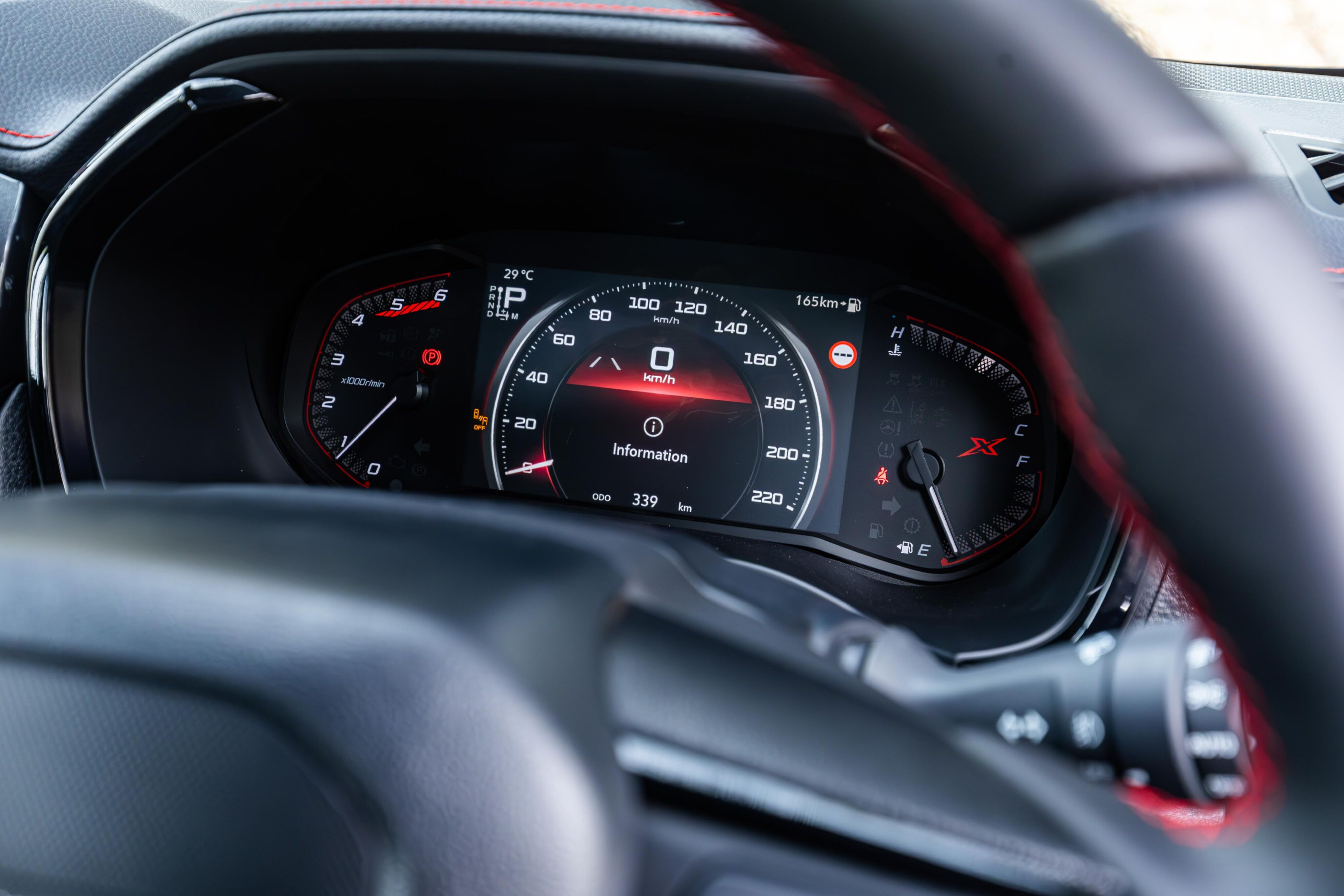
What body styles are available for the Isuzu D-MAX?
The D-MAX is available as either as 4x2, which drives the rear wheels only, or 4x4, which utilises part-time four-wheel drive. The D-MAX is classed as a light commercial vehicle.
Cab-chassis models give the option of fitting any applicable tray or service body, including designs tailor-made for specific applications.
Single-cab and space-cab models come only in this form, but the dual-cab can be optioned as either a cab-chassis, or with an enclosed factory tub at the back.
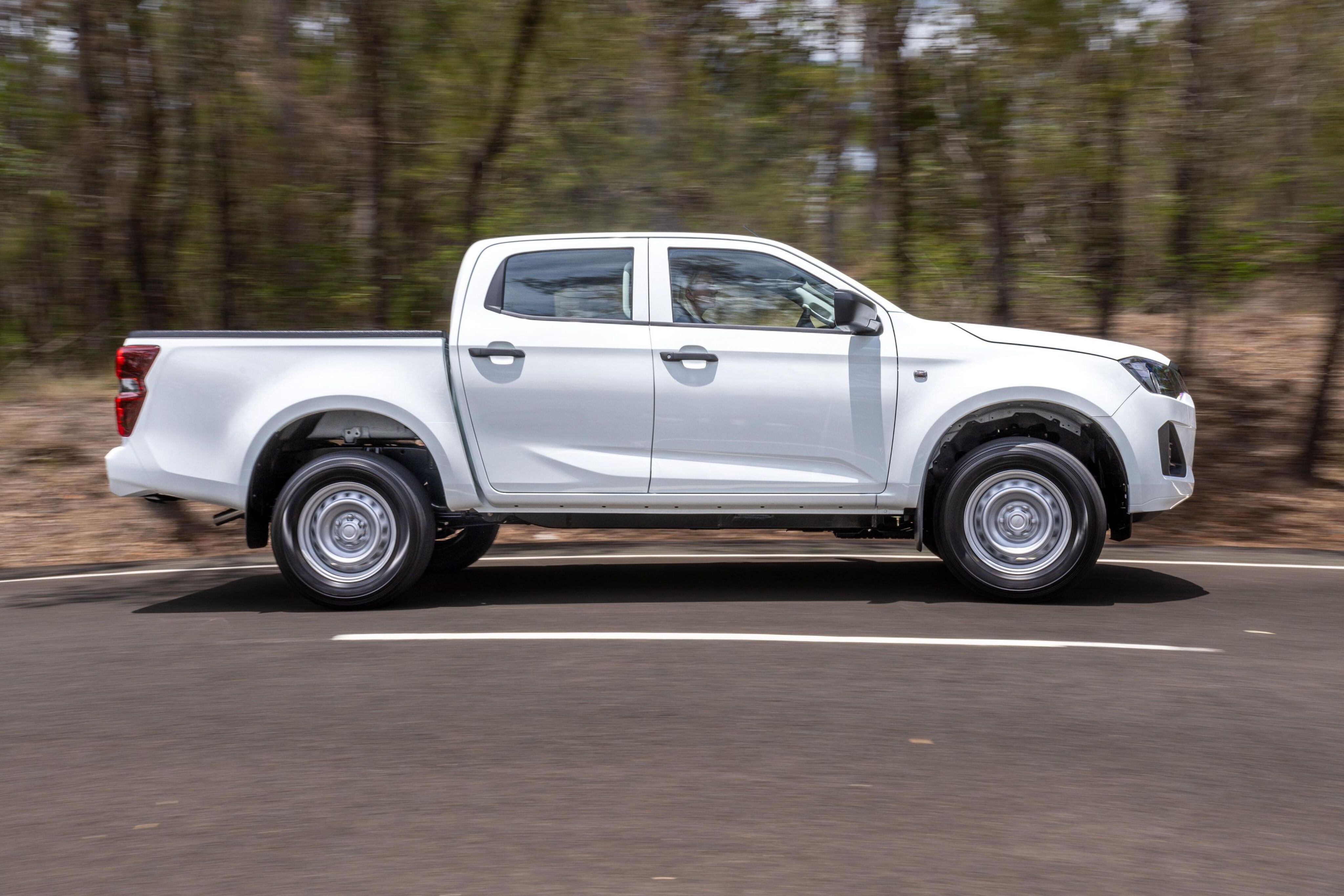
Single-cab models only have room for two passengers, while space-cab versions add two extra rear ‘jump seats’ accessed through shorter, rear-hinged back doors and can seat four.
Dual-cab models have larger, more conventional rear doors and can seat five. Sunshine Orange mica exterior paint features exclusively on the X-Terrain, following the discontinuation of Volcanic Amber metallic in 2024.
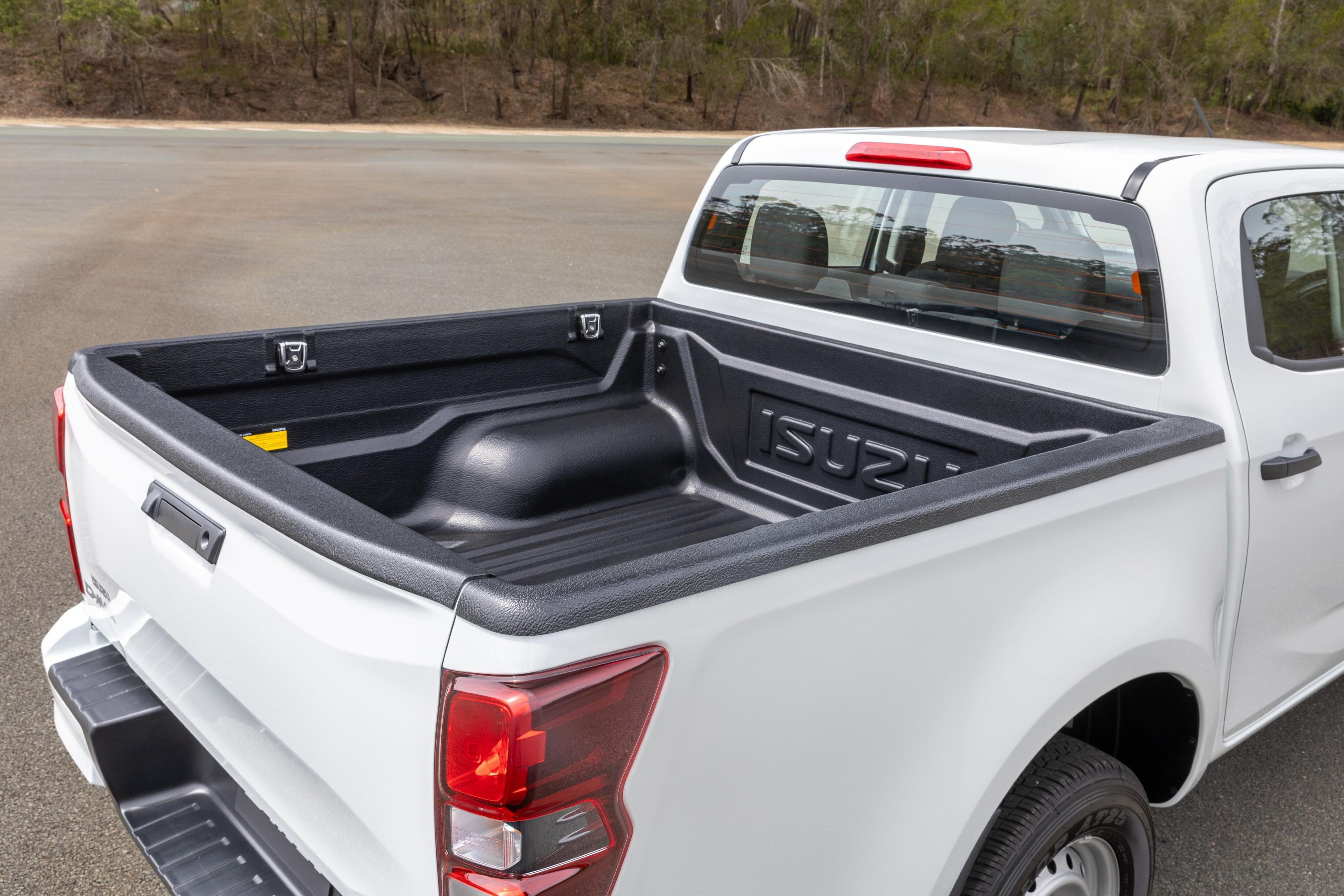
What features are standard in Isuzu D-MAX?
The features listed below are standard in the entry-level SX dual-cab model and will appear in higher-grade models, unless replaced by more premium equivalent features.
| 2024 Isuzu D-Max standard features | |
|---|---|
| 17-inch steel wheels | DAB+ digital radio |
| Dunlop AT25 tyres | Four-speaker sound system |
| Three-leaf standard rear suspension (Ute models) | Two USB-C ports (one in Single Cab and Space Cab) |
| Three-leaf heavy-duty rear suspension (Cab Chassis models) | USB-A port for aftermarket dash cam |
| Halogen headlights | Air-conditioning with HEPA filter |
| Welcome headlight function | Rear air vents (Crew Cab models) |
| Automatic high-beam | Urethane steering wheel |
| Gloss Black and Material Black grille | Urethane transmission selector |
| Tailgate assist (Ute models) | Urethane handbrake |
| 4.2-inch multi-information display | Vinyl floor |
| 8.0-inch touchscreen infotainment display | Cloth upholstery |
| Wired and wireless Apple CarPlay and Android Auto |
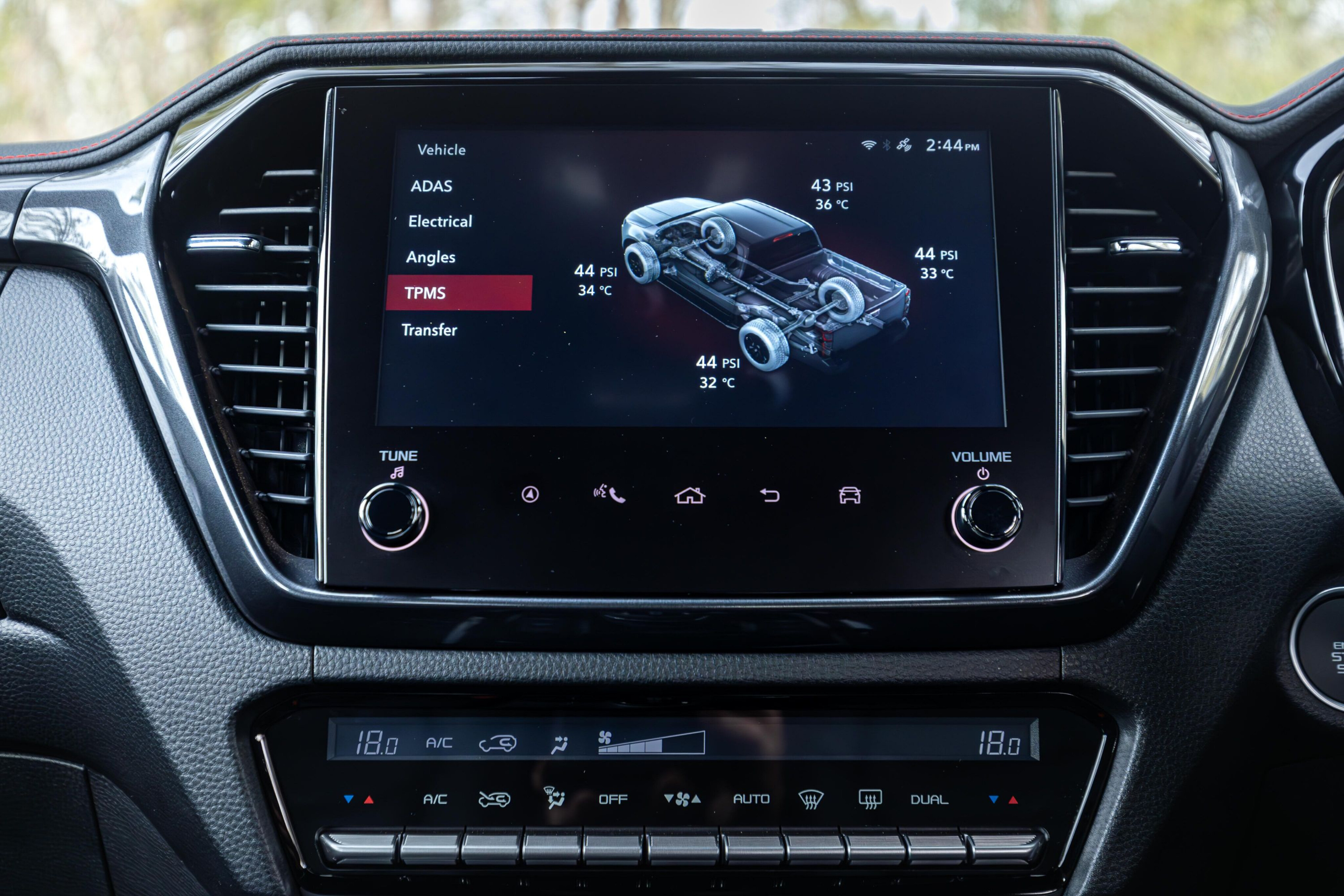
What key features do I get if I spend more?
There are plenty of changes as you rise up the D-MAX range.
The starting point in dual-cab ute form is the SX pick-up in 4x2 or 4x4 guise, with the 1.9-litre 110kW/350Nm four-cylinder turbo-diesel engine and six-speed manual or auto combination in 4x2 (or auto-only in 4x4).
Also offered in SX specification (with 4x4 only) is the 140kW/450Nm 3.0-litre diesel engine with a six-speed manual or auto.
Specification highlights of the LS-M dual cab over the SX centre on 17-inch alloy wheels, ‘high-grade’ cloth upholstery, LED headlights with auto-levelling, LED daytime running lamps, LED fog lights (new look), rear parking sensors (ute models), body-coloured mirrors, door handles and tailgate handle, and heavy-duty rear leaf spring suspension.
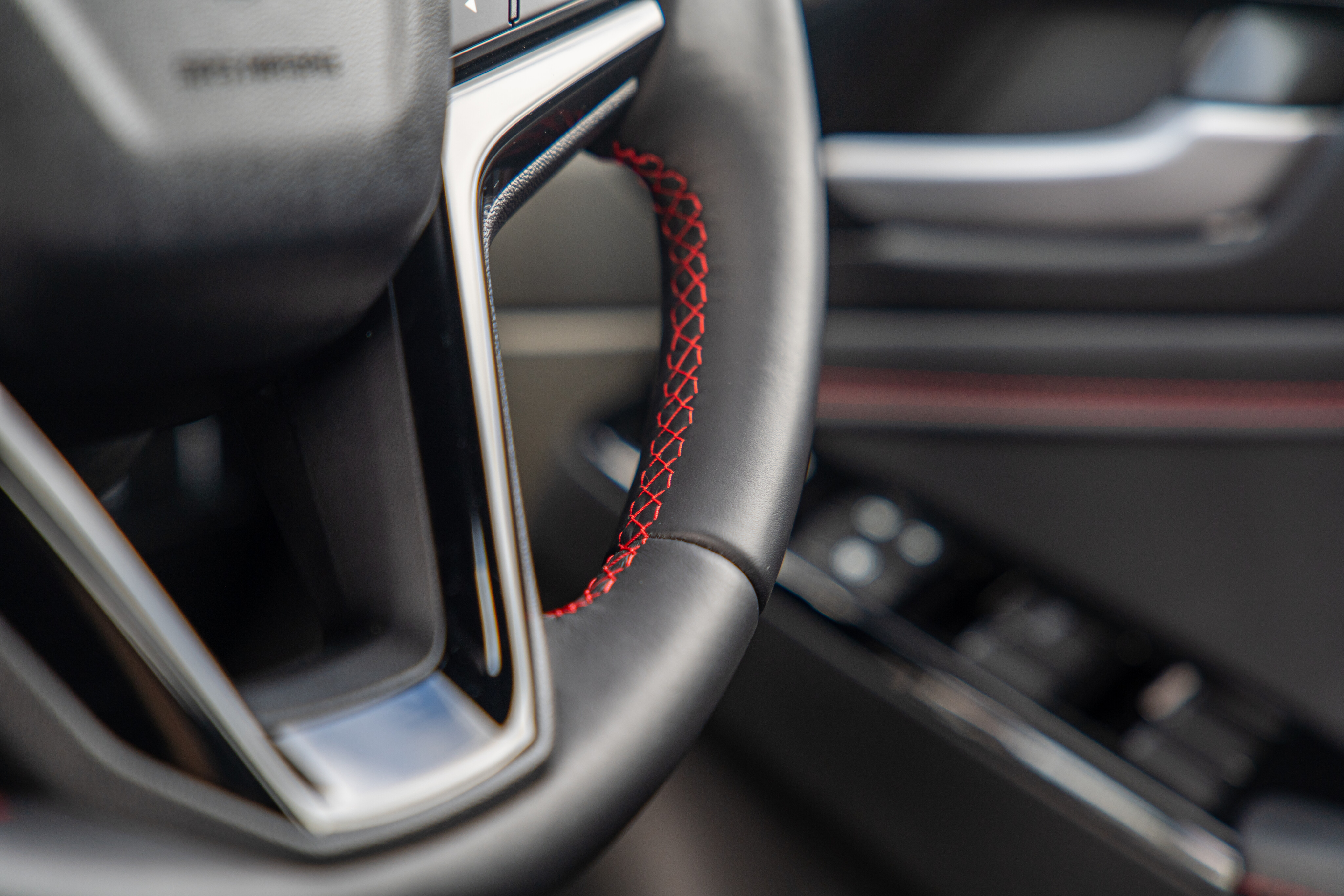
All D-MAX models get a six-year/150,000-kilometre warranty, with complimentary roadside assist for seven years. Servicing intervals are 12 months or 15,000km, whichever comes first.
For extra features, you could spend more for a D-M LS-U, which, like the LS-M, is available with a 3.0-litre diesel automatic and rear-wheel drive 4x2 or as a manual or auto part-time 4x4.
| 2024 Isuzu D-Max LS-U adds | |
|---|---|
| 18-inch alloy wheels | Eight-speaker sound system |
| Bridgestone 684II HT tyres | Three USB-C ports (Two in Space Cab) |
| Silky Silver and Dark Grey metallic grille | Proximity entry and push-button start |
| Tow bar receiver | Walk-away door lock |
| Tub liner (Ute models) | Welcome light |
| Silver side steps | Dual-zone climate control |
| Chrome door handles, tailgate handle | Auto-dimming rear-view mirror |
| Electric folding and heated side mirrors | Leather-trimmed steering wheel |
| LED rear combination tail lights | Satin chrome steering wheel spoke trims |
| 7.0-inch digital instrument cluster | Leather-trimmed gear selector |
| 9.0-inch touchscreen infotainment system | Piano black, silver and chrome interior trim accents |
| Six-speaker sound system (Space Cab models) | Soft-touch door trims and centre console armrest |
| Satellite navigation | Carpet flooring |
| Driver’s seat power lumbar support | Tyre pressure monitoring |

Paying more again for an LS-U+ gets you those features plus:
| 2024 Isuzu D-Max LS-U+ adds | |
|---|---|
| Heated front seats | Leather-accented door trims |
| Leather-accented upholstery | Eight-way power driver’s seat |
| Four-way power front passenger’s seat |
The previously limited-edition X-Rider variant is now a permanent addition to the range:
| 2024 Isuzu D-Max X-Rider adds | |
| Gloss black 17-inch alloy wheels | Black B-pillars |
| Black grille | Dark grey sidesteps |
| Black front underbody spoiler | Black interior door handles |
| Dark grey grille surround | Dark grey and black interior door trims |
| Black rear step bar | Piano black steering wheel spoke trims |
| Black mirrors, door handles and tailgate handle | Black headlining |
| Black loopless soft tonneau cover | Satin black sports bar |
| ‘X’ badging on tailgate |
The X-Terrain is an upper-spec D-MAX model, offering the following features:
| 2024 Isuzu D-Max X-Terrain adds | |
|---|---|
| 18-inch matte grey alloy wheels | Material black grille surround |
| Dark Grey and Black Chrome grille | Leather-accented upholstery with red stitching |
| ‘X’ badging on tailgate | Red stitching accents |
| Matte black roller tonneau cover | Remote engine start |
| Dark grey metallic aero sports bar | Front parking sensors |
| Dark grey metallic sidesteps, mirrors, door handles, tailgate handle, roof rails, front and rear underbody spoilers and fender flares |
The Walkinshaw-fettled Blade is a permanent addition to the D-MAX line-up. The off-road-focused halo model is loaded with Walkinshaw kit, but the engine remains unchanged.
| 2024 Isuzu D-Max Blade adds | |
|---|---|
| 244mm ground clearance | 29.2° approach angle |
| 19.2° departure angle | 25.2° breakover angle |
| Blade-exclusive lifted suspension, finished in signature Isuzu red | Blade-exclusive 3mm bash plate underbody protection, finished in signature Isuzu red |
| Blade-exclusive 8-tonne load rated recovery points with cross-bracing, finished in signature Isuzu red | Blade-exclusive satin black 17x8.5-inch +28 flow-formed alloy wheels |
| 275/65R17 Goodyear Wrangler Duratrac RT all-terrain tyres | Satin black front grille with ISUZU lettering |
| Satin black front bumper cladding | Satin black fender flares with integrated air curtains |
| Blade-exclusive widened mud flaps | Satin black ‘BLADE’ lettering across tailgate |
| Blade-exclusive satin black tailgate badging | Blade-exclusive satin black decals on front bar, bonnet, doors and tailgate |
| Blade-exclusive satin black tubular side steps | Satin black one-piece extended sports bar with integrated stop lamp |
| Tinted lens light bar integrated into the front grille | Blade embroidered headrest |
| Blade embroidered floor mats | Blade embossed scuff plates |
| Individually numbered Blade identification plaque on transmission selector surround | Individually numbered Blade identification plaque in engine bay |
| Basalt Black tailgate and door handles | Basalt Black door mirrors |
| Available in Moonstone White pearl, Basalt Black mica, Granite Grey mica or Sunstone Orange mica | |
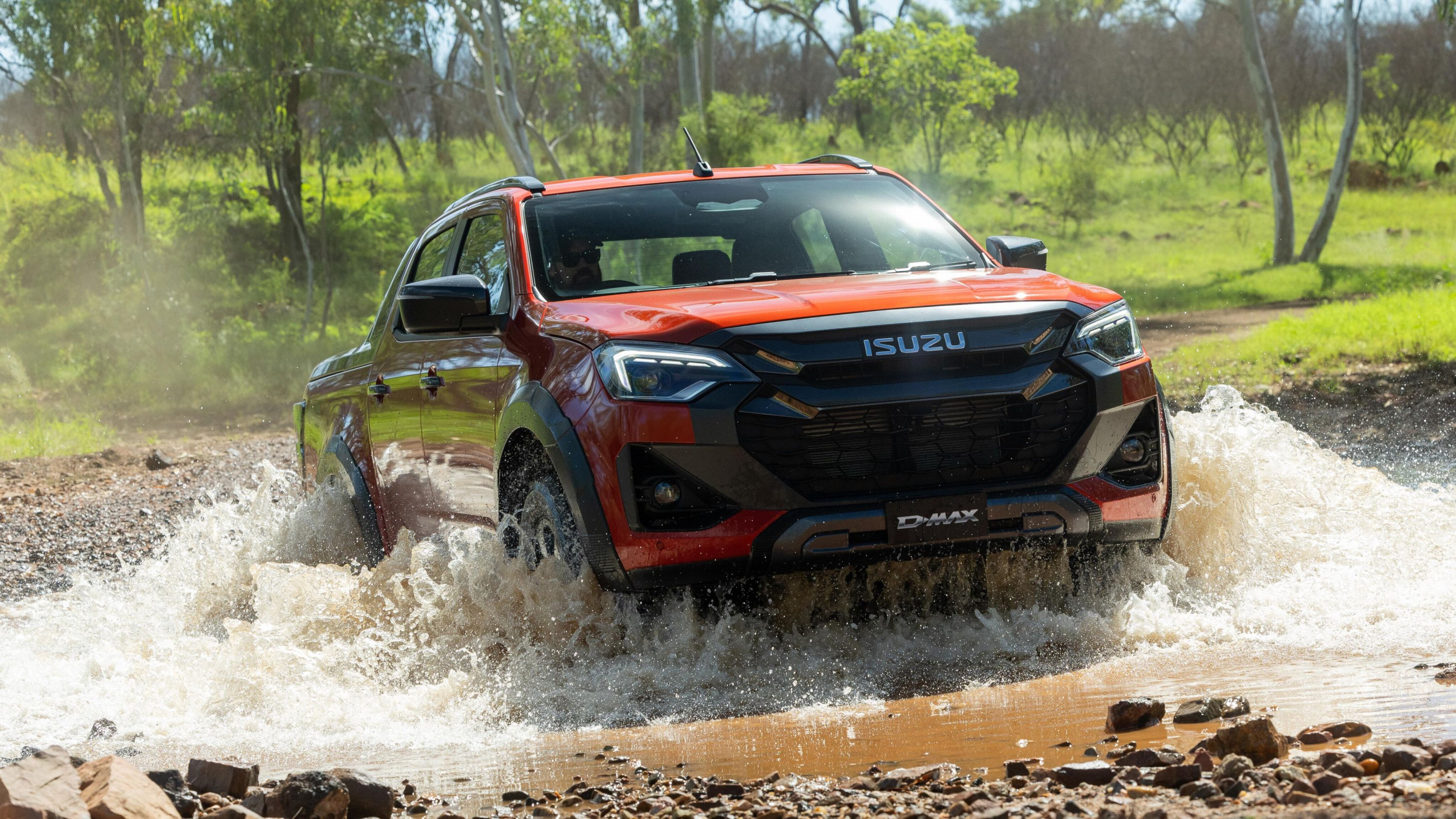
How safe is the Isuzu D-MAX?
The D-MAX, along with its platform-shared Mazda BT-50 derivative, set a new benchmark among mid-size utes when they arrived in 2019, featuring a long list of standard active safety equipment in all models.
ANCAP (Australasian New Car Assessment Program) awarded the D-MAX a full five-star crash safety rating in 2020. It scored well in child occupant protection as well as safety assistance systems, thanks in part to the inclusion of standard AEB and lane-keep technology.
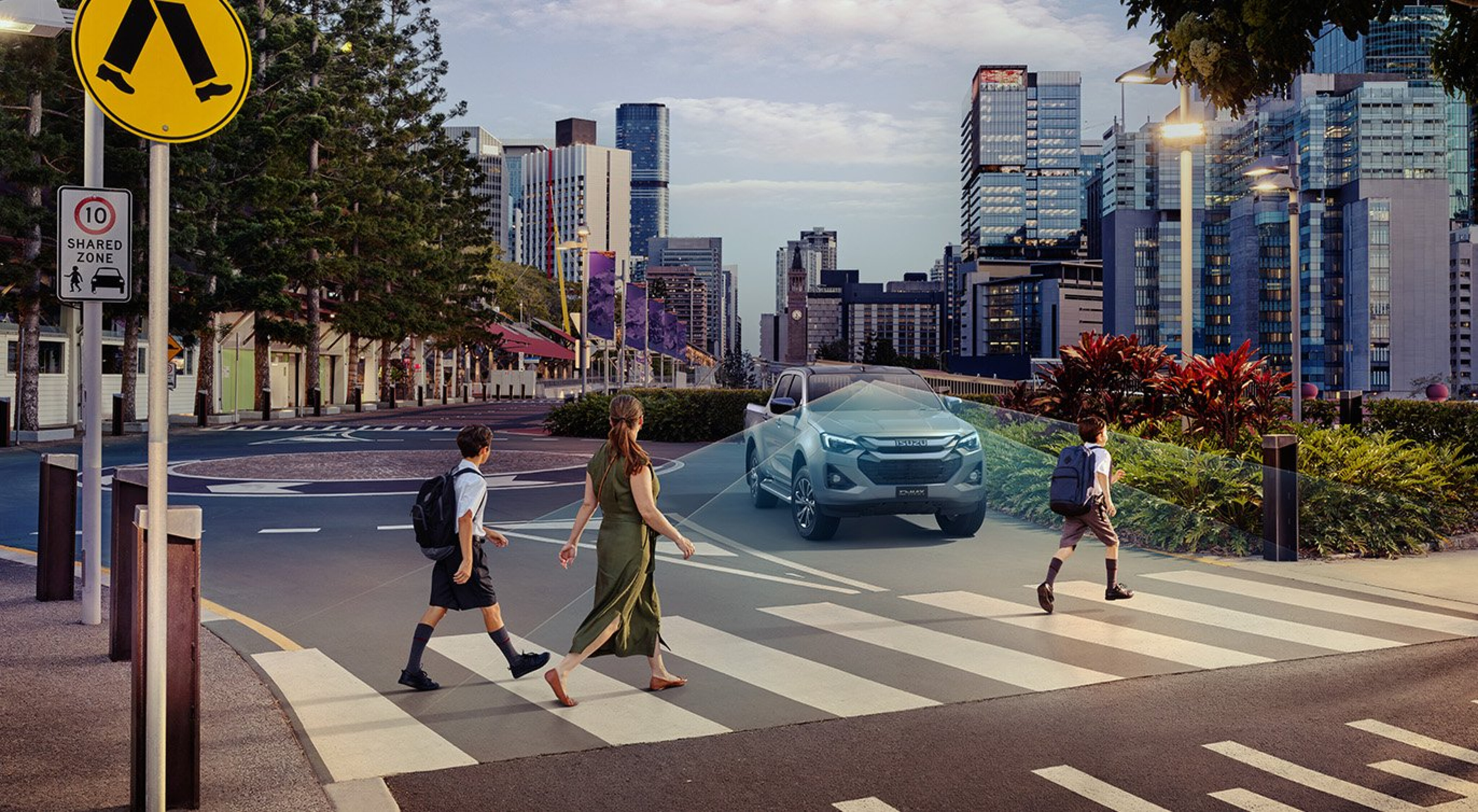
It lost marks for the absence of AEB in reverse and, like many high-riding utes, was marked down for vulnerable road user protection including head impact rating.
Other standard safety features include eight airbags, ISOFIX and top tether anchors for two child seats in the second row, blind-spot monitoring, speed sign recognition, driver fatigue monitoring, adaptive cruise control, rear cross-traffic alert and reversing camera.

How comfortable and practical is the Isuzu D-MAX?
The Isuzu D-Max interior is one of the least utilitarian of dual-cab utes, with good fit-and-finish plus a logical dashboard layout.
Whereas the Mazda BT-50 has easily the most car-like of ute cabins with its tasteful two-tone upholstery, the D-MAX lacks its platform partner's more luxurious cabin finish. At least the Isuzu's front seats are as comfortable as they look and offer a generous 90mm of headroom for the driver.
The impressive 9.0-inch central touchscreen matches that of the BT-50 and, while it has sharp graphics and decent features, the system takes more than 20 seconds to boot up after the engine is started – the longest of any ute in our recent giant dual-cab comparison.
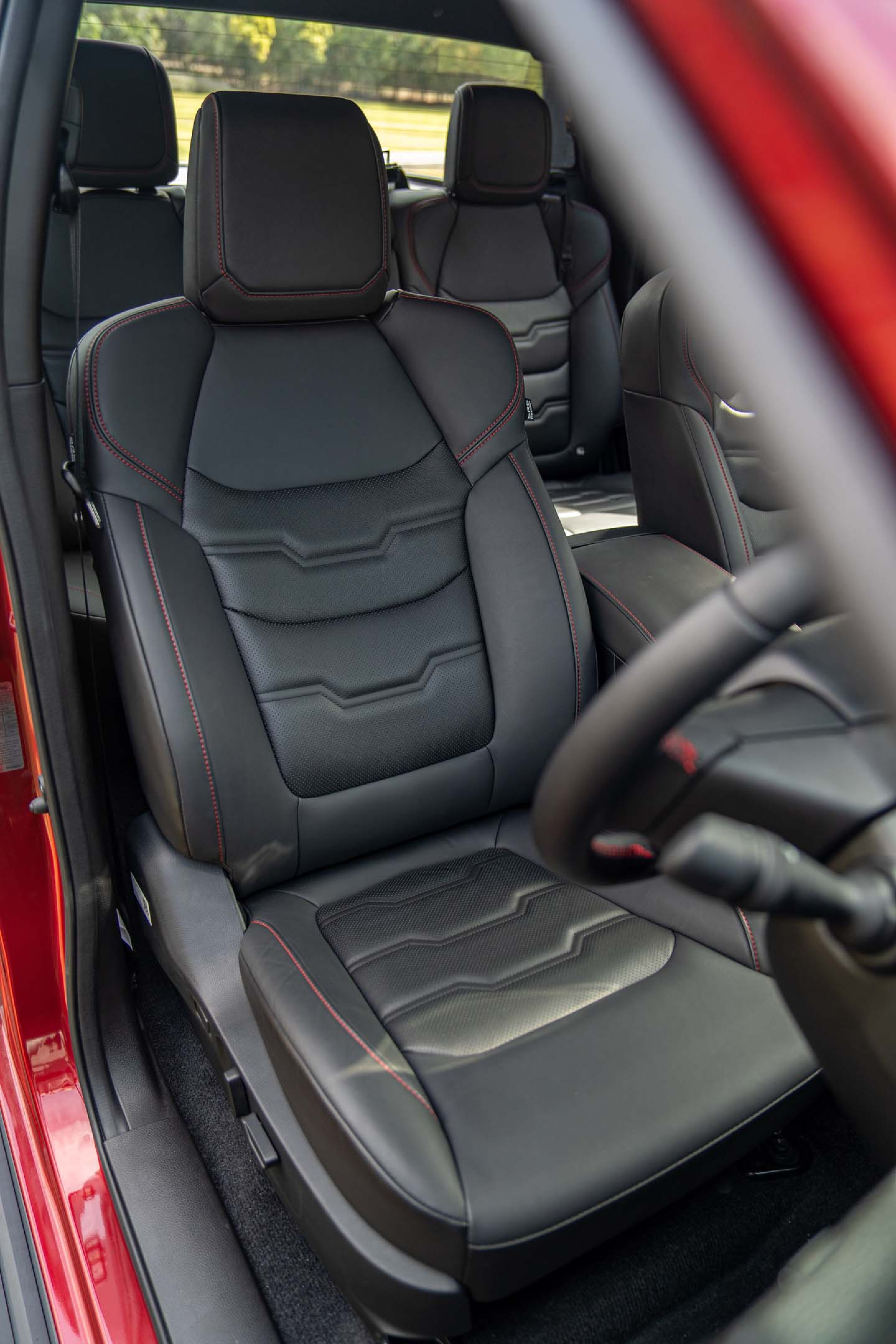
Unlike some others, the touchscreen does not incorporate the climate control functions, which are instead housed in a specific panel below with a clear digital display and hard switches.
Also common to both Isuzu and Mazda are a small, sporty and ergonomic steering wheel covered in top-quality leather with two-way adjustment, an upholstered dashboard with real stitching, a big phone storage tray and a USB-A port plus 12-volt power outlet for the front row. There’s also a neat double glove box, which the Isuzu adds to with a further lidded cubby on top of the dash.
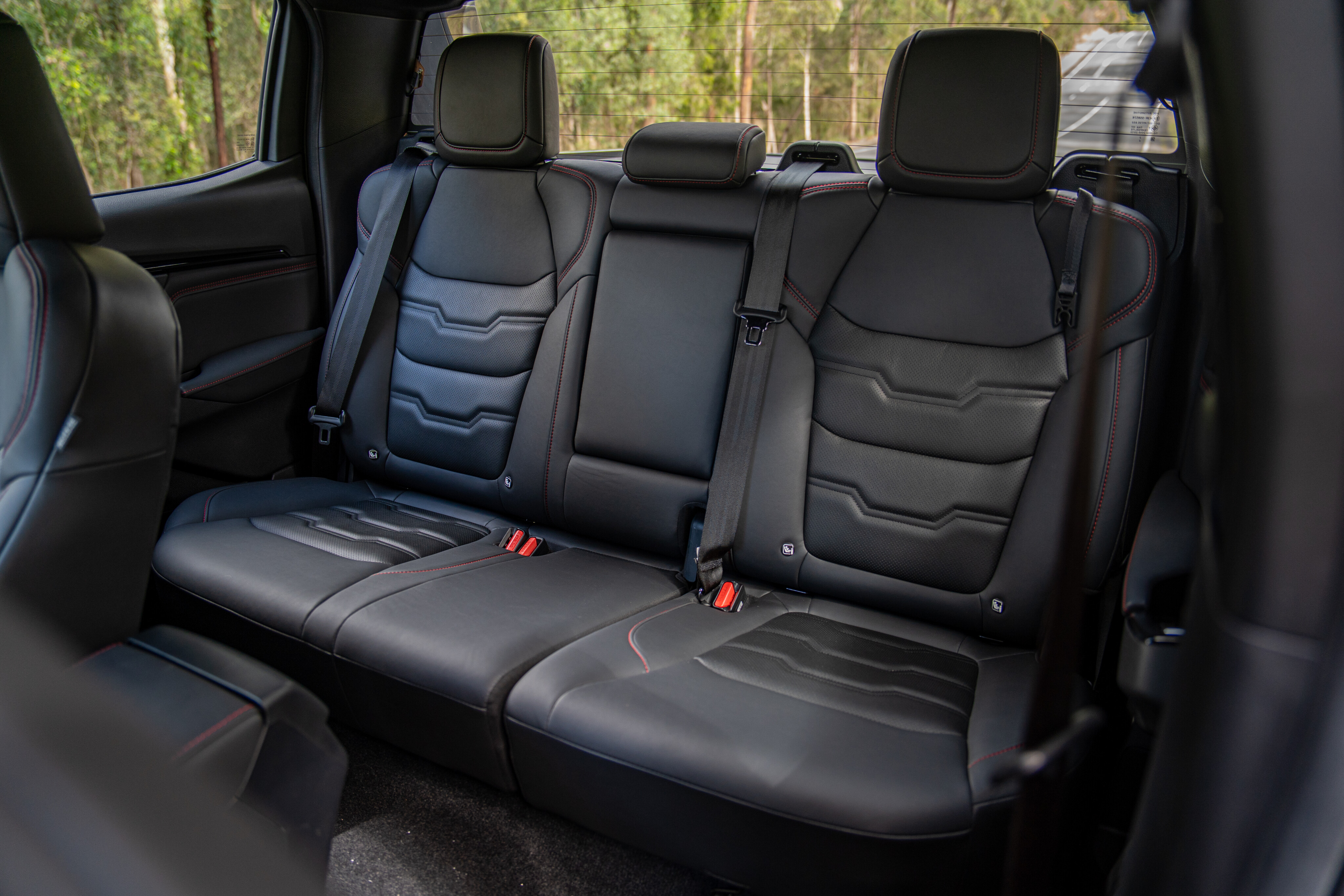
Second-row passengers are also well looked after with a whopping 100mm of knee room, another USB socket, ample toe room, ceiling-mounted speakers and great visibility even for smaller occupants.
Headroom is limited in the second row compared to the front, with just 40mm of space and the rear doors don’t open as wide as some other utes which could make loading people and things a little trickier. The D-MAX gets pleasant cloth upholstery and manual driver’s seat adjustment, plus electric lumbar support adjustment from LS-U trim and up.
The Blade adds exclusive embroidered headrests and floor mats, as well as embossed scuff plates. Blade variants also feature an individually numbered identification plaque on the transmission selector surround. All else remains the same, otherwise.
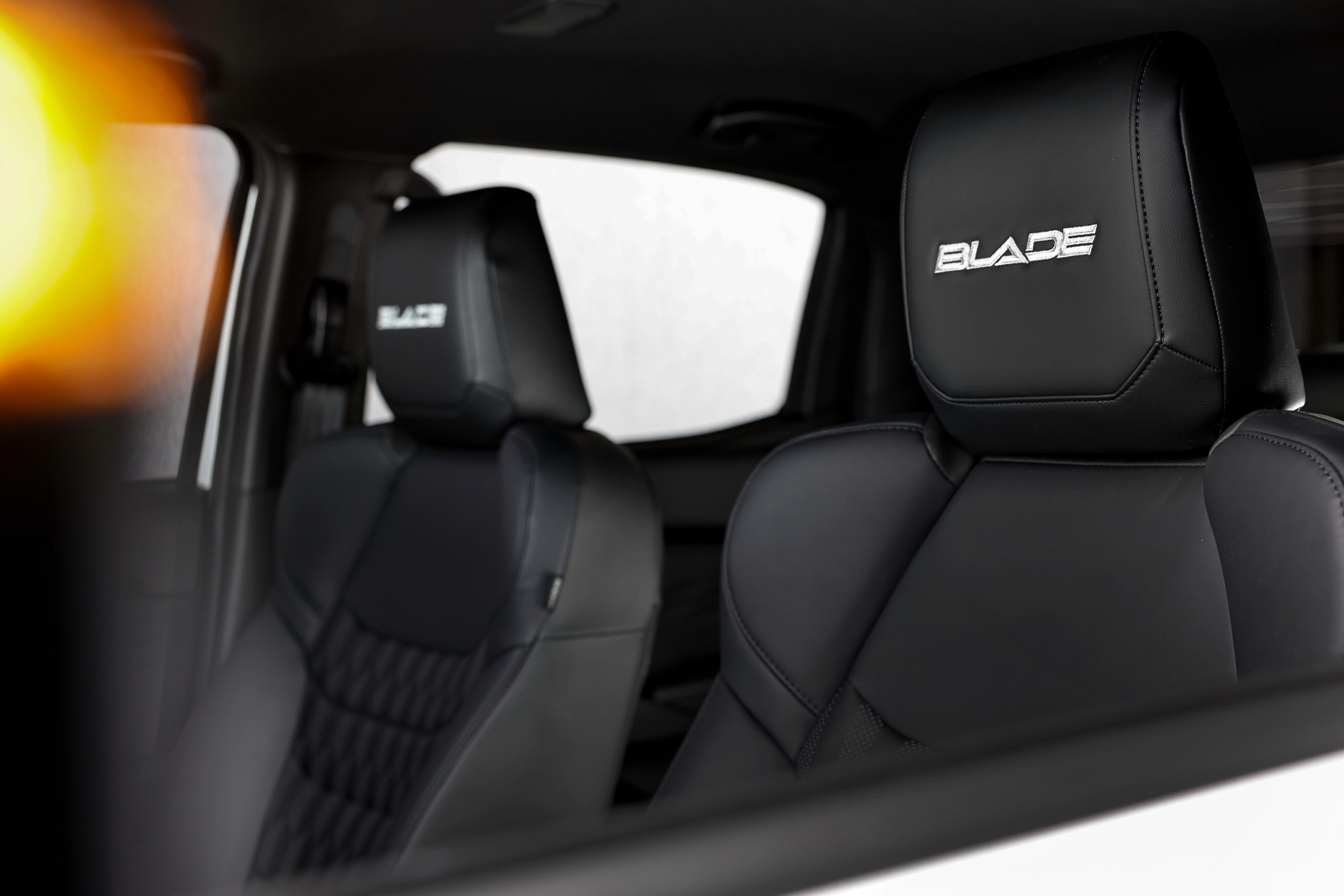
How big is the tray/tub?
Roller tonneau covers are fitted to the upper-spec models, which are simple in operation and offer effective security but take up valuable real estate and will be the first thing taken off if you actually need to use the ute’s tray much at all.
Unfortunately, with the tonneau cover, the tray only features two tie-down points towards the rear, but lower-spec models without the roller cover get four tie-downs. The dual-cab D-MAX has a tray that is 1570mm long by 1530mm wide. The Blade gets a sports bar as standard.
If you are looking to tow a trailer, caravan, boat, or similarly hitched wagon with your dual-cab, the D-MAX LS-U is a compelling choice. It boasts an official braked towing rating of 3500kg, with a 6000kg gross combination mass.
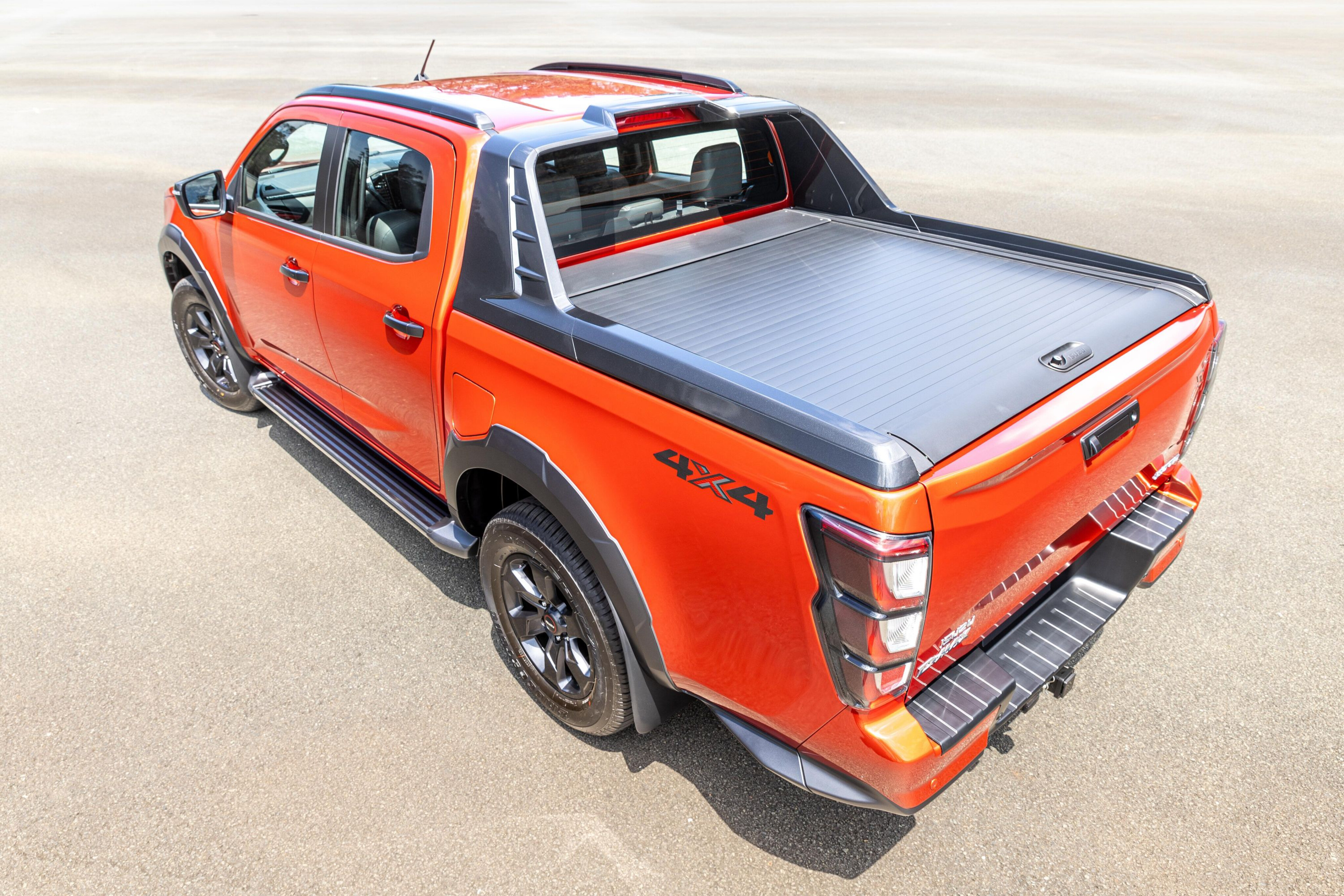
I like driving – will I enjoy this car?
Yes, to a degree. The Isuzu D-MAX is one of the easier and more satisfying mid-size utes to drive, and the rougher the road, the better.
The Isuzu D-MAX isn’t the final word in dual-cab driving refinement, but given its real-world capability off the beaten track, this is very easily forgiven.
It should also be noted that even with a more utilitarian focus, the D-MAX still outclasses key rivals in the segment when it comes to on-road driving. We're impressed by the relatively responsive engine, which provides a surge of torque from 2000rpm through a sweet spot at 3500rpm.
It has fewer ratios than rivals, but the six-speed automatic transmission has an intuitive calibration. Its only major downfall is a tendency to hold onto revs more than we’d like on prolonged downhill sections.
A stiffer suspension calibration means the D-MAX has the characteristic dual-cab ‘patter’ in most urban environments, but this is offset by excellent (for the class) cabin refinement. With Bridgestone Dueler H/T tyres, the D-MAX impresses with its ability to keep road and tyre noise in check.
A big highlight is the steering. This is a massive step up from the old model and will have few drivers complaining – particularly if they have much exposure to other key dual-cab models.

The steering wheel itself is nicely proportioned and is weighted in a sweet spot that balances around-town commuting needs and highway stability with agility at low speeds. While there is some stiff-legged compromise, the D-MAX is a true ‘Jack of all trades’ when it came to driving needs.
If any of the terms in this section have left you scratching your head, these articles will help bring you up to speed!
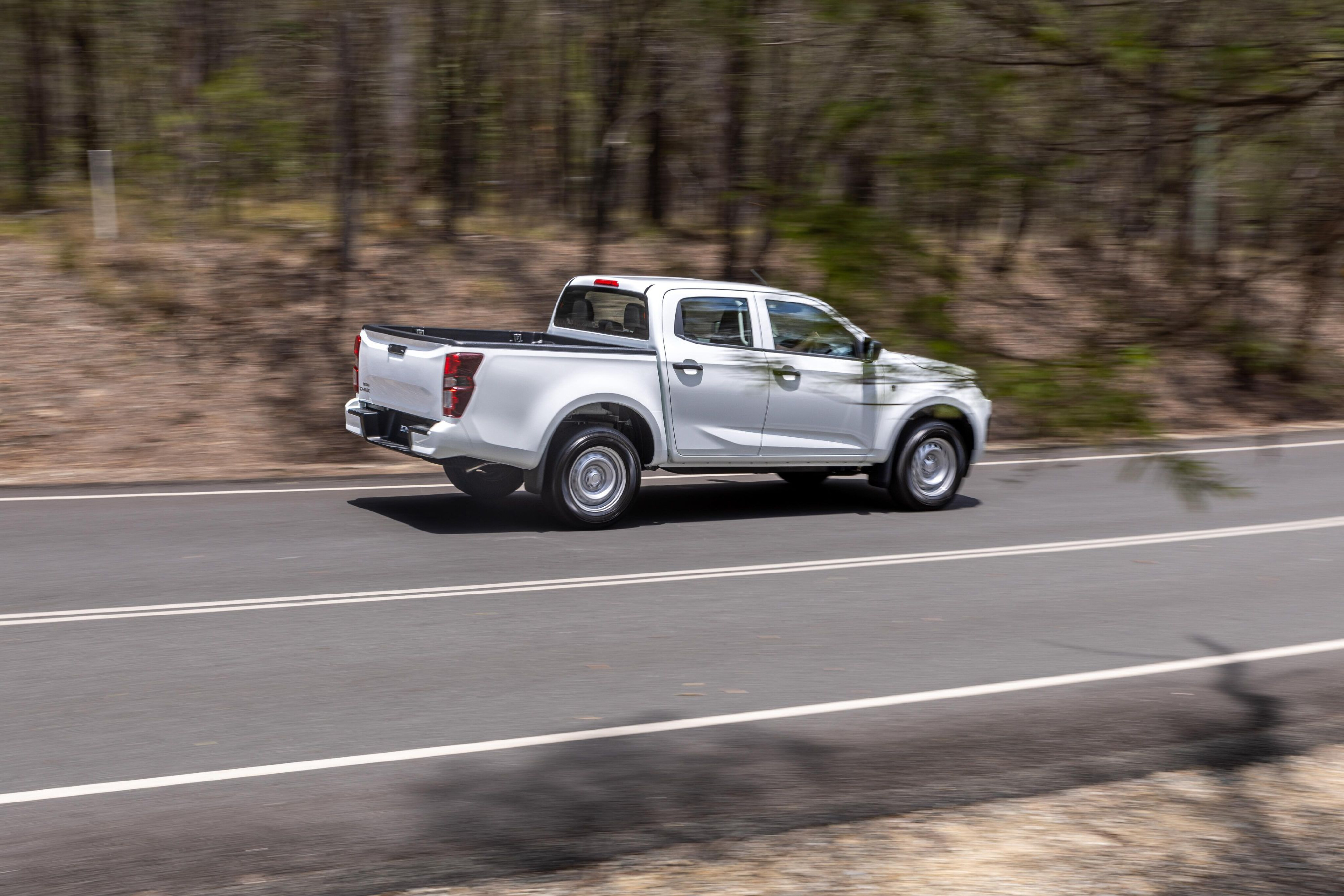
Which Isuzu D-MAX engine uses the least fuel?
The D-MAX 1.9L 4x2 automatic dual-cab uses just 6.7L/100km (claimed) on the combined cycle, while the 3.0L-engined 4x2 (automatic) and 4x4 auto and manual dual-cab models use a claimed 8.0L/100km. All D-MAX models have a 76-litre fuel tank.
While the 1.9L engine version is cheaper to buy and has slightly better fuel economy, it lacks the 3.0-litre engine’s power and torque (by 30kW and 100Nm) as well as towing capacity (by 500kg to 700kg). For those wanting a 1.9L, it is available with a manual or automatic transmission in 4x2 form or an auto-only 4x4.
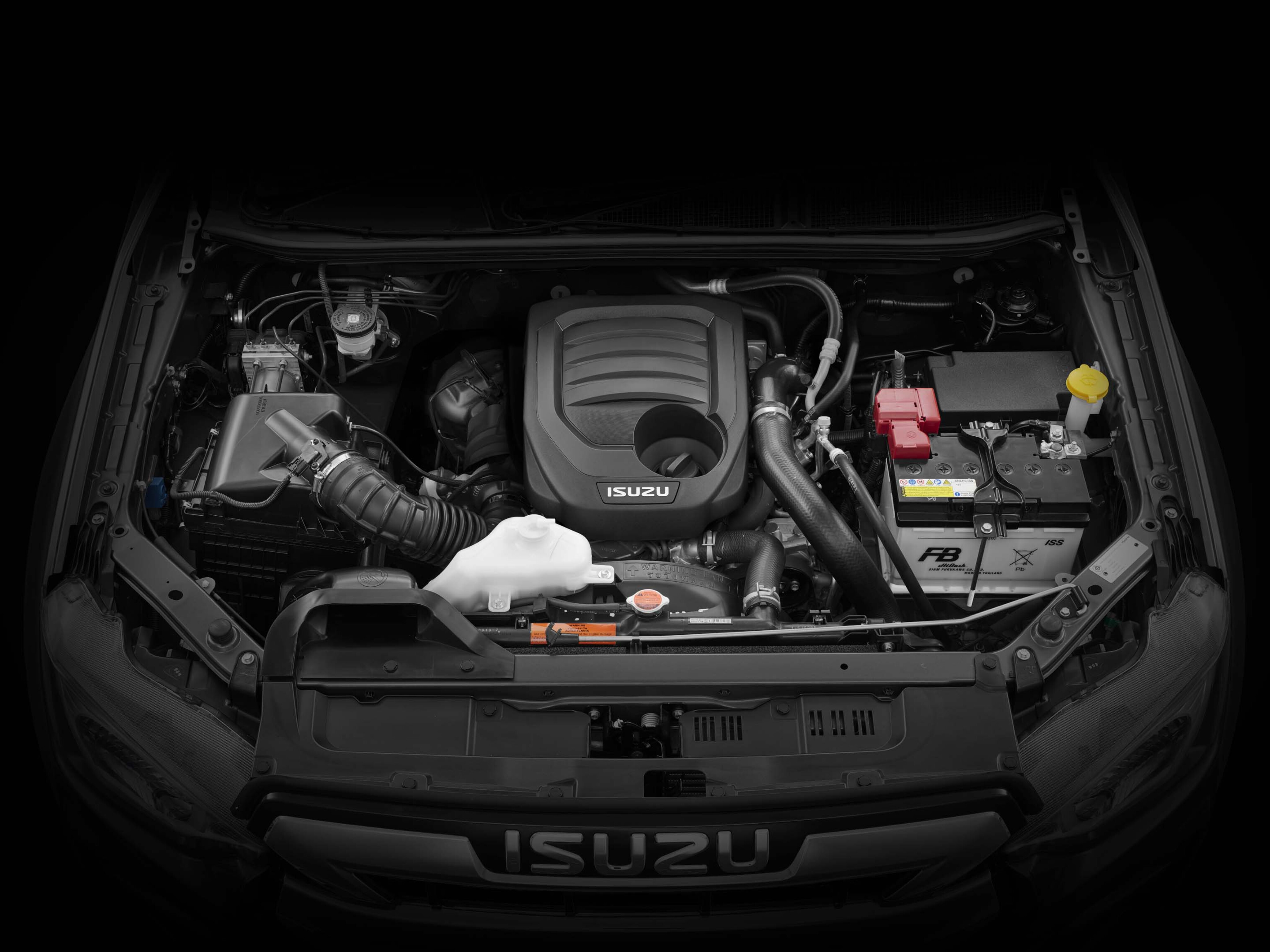
What is the Isuzu D-Max’s towing capacity?
The Isuzu D-MAX has a maximum braked towing capacity of 2800kg/3000kg (manual/auto with the 1.9L engine) or 3500kg (3.0L engines).
It has a tow ball download maximum rating of 280kg/300kg for the 1.9L engine and 350kg on all other models. Payload in the dual cabs ranges from 925kg for the X-Terrain to 1405kg for the SX 4x2 cab chassis.
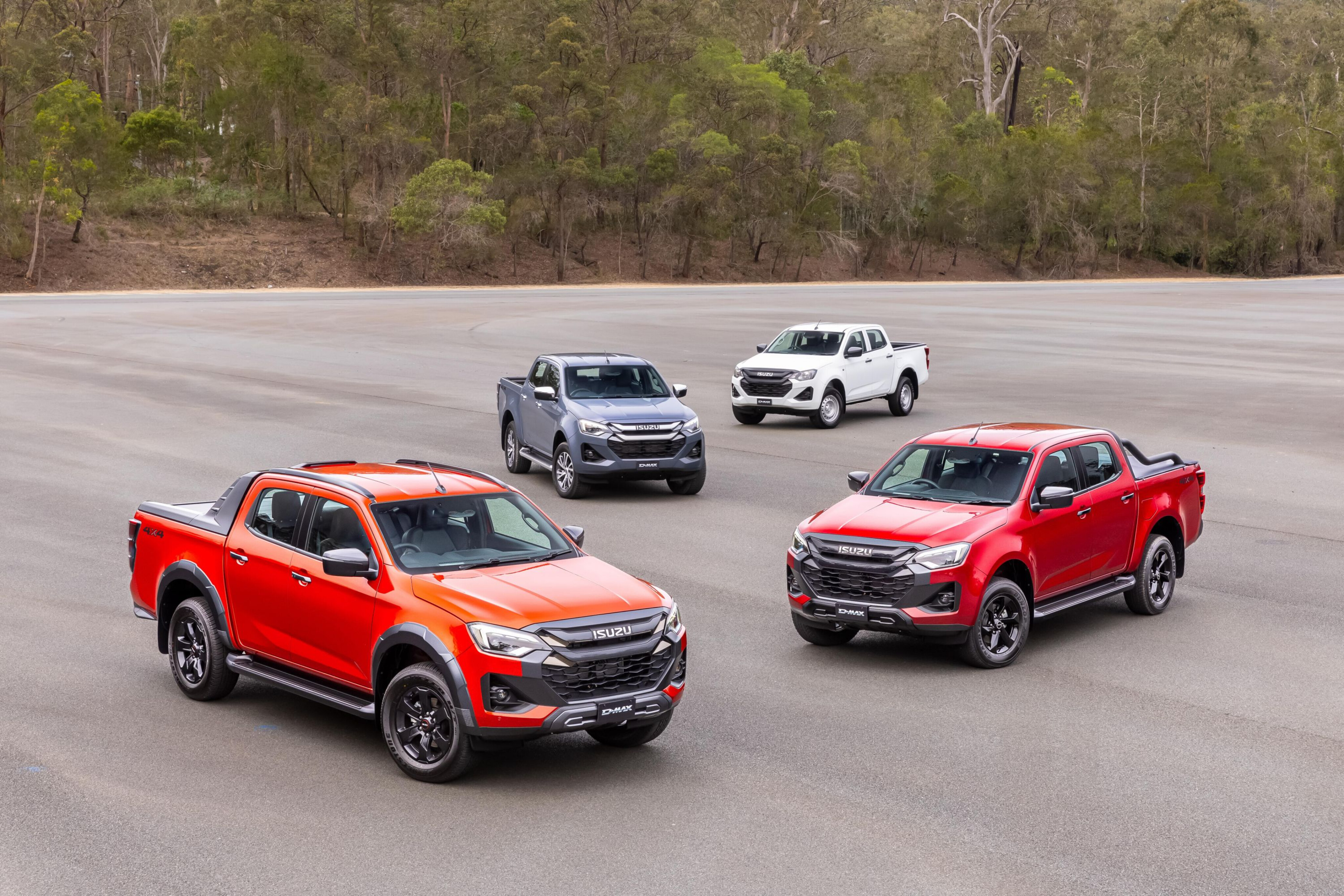
How long is the warranty and what are the Isuzu D-MAX’s servicing costs?
The D-MAX’s warranty coverage is for six years or 150,000 kilometres, along with roadside assistance for seven years.
Isuzu specifies scheduled servicing every 15,000km or 12 months, whichever comes first, with a first free service at 3000km or three months. Under its capped-price service offering, maintenance costs range from $335 to $799 per service, depending on the interval.

Which version of the Isuzu D-MAX do we recommend?
There is much to like about the X-Terrain, with its plush leather interior and roller tonneau cover.
However, for the best value and overall practicality, the D-Max LS-U dual-cab auto at $61,000 (before on-road costs) would be the sweet spot of the range. You get keyless entry and start as well as a tow bar and embedded sat-nav.
If you really must have the luxury feel of leather in your D-MAX, there is the LS-U+, which adds leather (heated front) seats plus a few more power driver’s seat adjustments for an extra $3000.
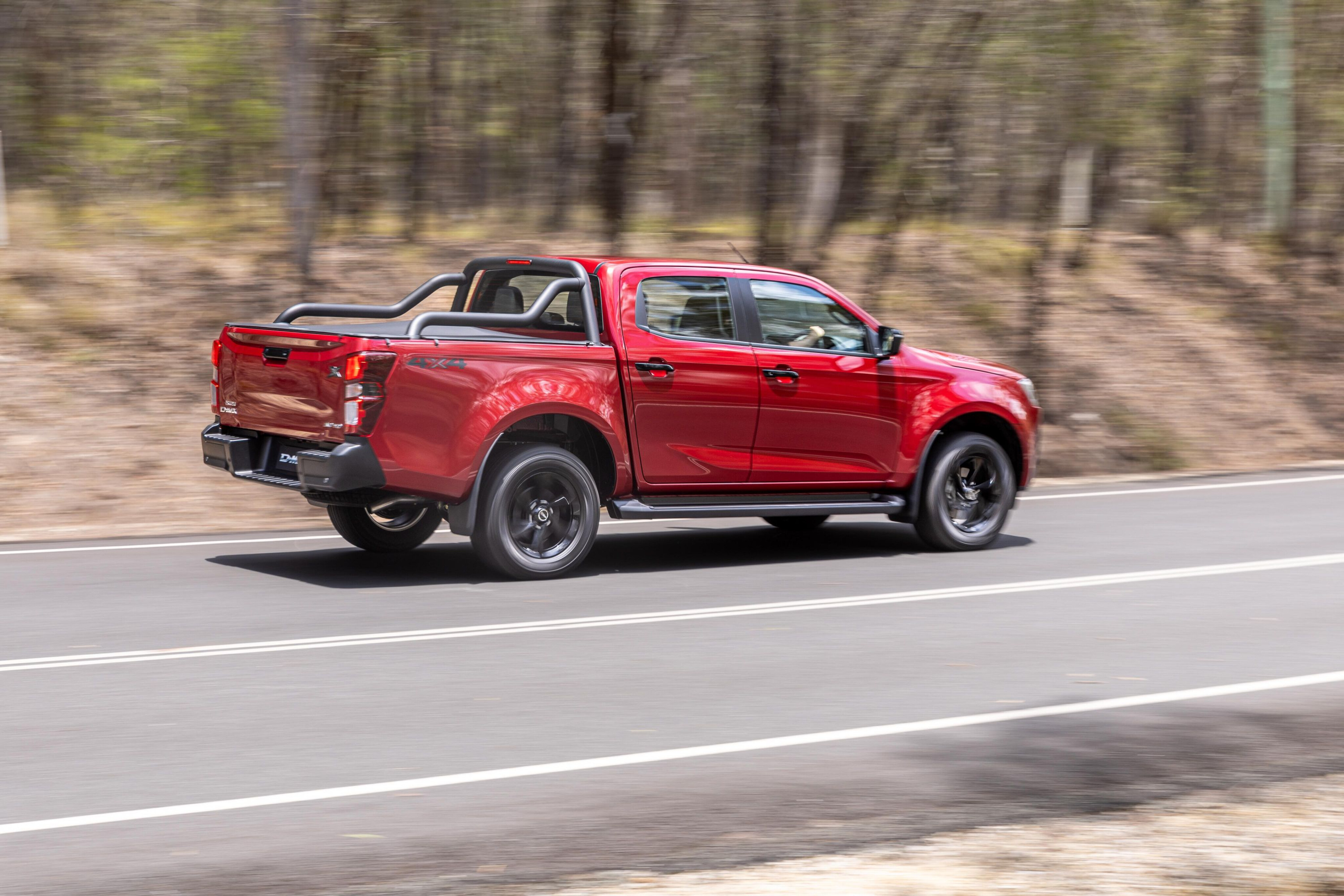
What are the Isuzu D-Max’s key rivals?
Score breakdown
Things we like
- Comprehensive standard safety list
- Respectable manners on- and off-road
- Fuel efficiency
Not so much
- Engine refinement
- Slow infotainment boot-up
- Six-speed auto is dated

COMMENTS